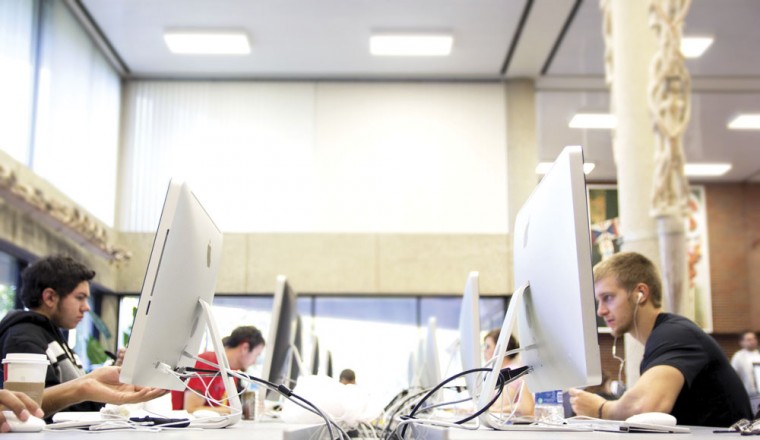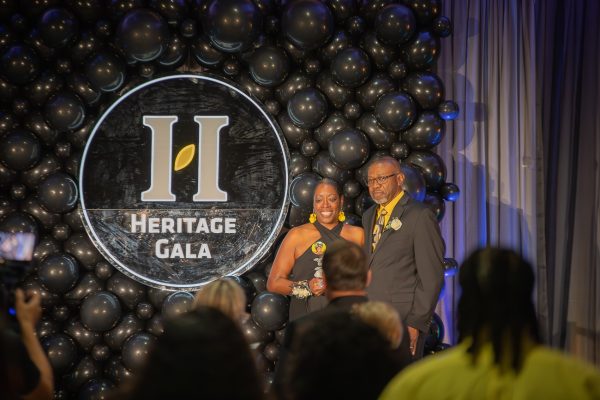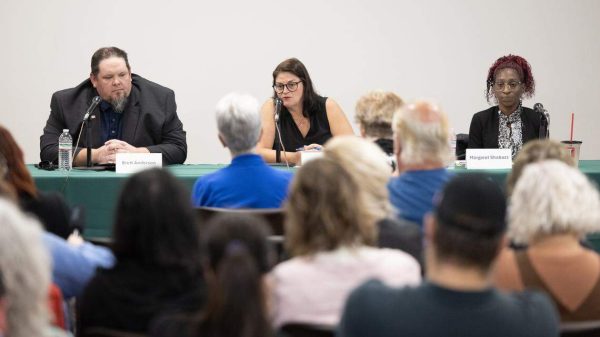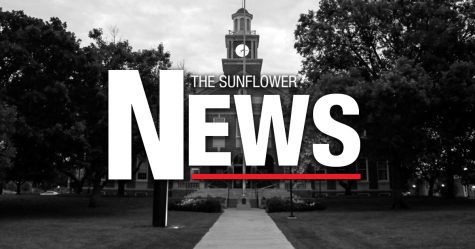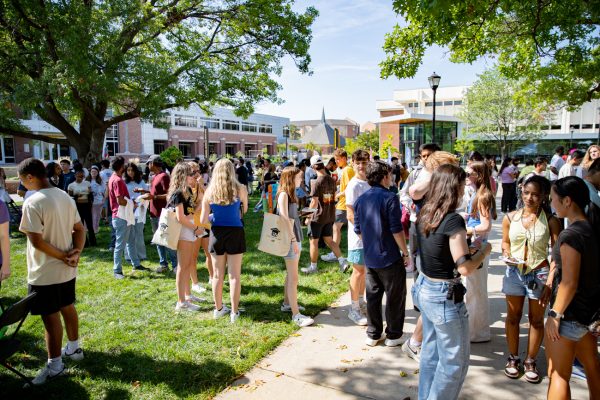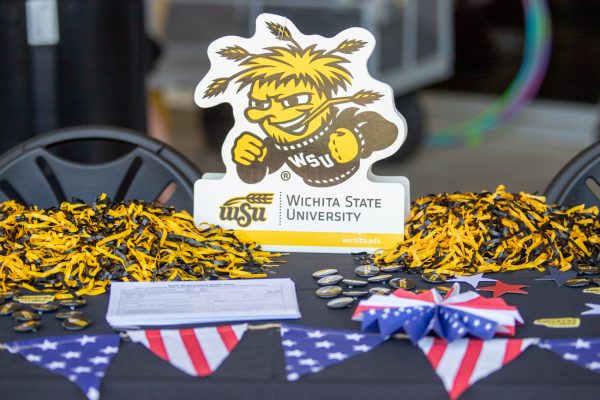Ablah Library slowly transitions to the digital age
Students use computers in Ablah library.
With the rise of technology changing the way things are done in the world, Ablah Library has spent the better part of the last four decades making a digital transition to accommodate the digital age.
Nan Myers, the director of Public Services at Ablah Library, said the library couldn’t escape from going digital.
“There is no way we could not be going more digital because of the expectations of our users,” Myers said. “We also think it leads to a higher success level for students and faculty who are engaged in research.”
Myers said the library began electronic accessibility in the 1970s when it acquired a system allowing materials to be checked out electronically. This electronic system continued into the 1980s when the library acquired the first online catalog software.
“Some teachers did not want the card catalog we had to go away,” Myers said. “Now we kind of smile about that because no one wants the card catalog back.”
In the 1990s, the era of the online library system took off.
“[Back then, the focus was that] everything that goes on in the library that’s managed electronically is connected,” Myers said.
Myers said the increase in digitization provides some hectic days for the library staff.
“You can hardly go a day without learning something new, or being on top of the need to know something new,” Myers said.
Myers estimates the library has approximately 50,000 books available electronically. However, they do not get used to the extent Myers expects.
“They can be checked out, but we find that students may only be looking for something specific in the book, instead of reading it entirely since most of our books are reference or research books,” Myers said.
In addition to the growing trend of technology, the destiny of the print material in the library is in doubt. Myers said the elimination of print material is quite a ways in the future.
“Many predict we won’t have any of the print material anymore,” she said. “That’s hard to conceive.”
Myers said it is not the goal of the library to save the print material either.
“It’s our goal to see what the trends are, what the better technologies are, what instruction avenues are and go and do the best job we can with all of that.”
In addition, the library runs a digital depository known as SOAR, which runs software called “D space.”
“It is an environment where we can digitize and provide access to all of the information that needs to be archived for the university,” Myers said. “All the dissertations and theses are available electronically [with SOAR].”
Myers said faculty members can store all of their publications on SOAR.
Another trend the library has been involved in for the last two years is Patron Drive Acquisitions (PDA). With PDA, patrons can load records into the online catalog for books the library does not own, and they can acquire the E-book version of the book. If it is not available as an E-book, the vendor receives a signal to ship the material as an overnight shipment, Myers said.
Myers said the library will have a trial in the spring, where they will only acquire engineering books by PDA.
“That doesn’t mean we’ll continue if someone tries to get every book they need or want,” Myers said. “But we will make it available for students to try out.”
In addition, the library staff frequently updates the computer terminals. Myers said the terminals are updated every three years, and the library is constantly getting more terminals. For example, the library now has 10 Apple computers, when it used to only have three.
“We just ordered 10 iPads for students to check out and use while in the library,” Myers said. “If we know that students want it, we’ll try to get it.”
Students also have the option of purchasing print textbooks, or the online or E-book version if they prefer.
Freshman Megan Roser, a nursing major, said she would prefer both the book and the electronic version of it if the electronic version were available.
“If you can’t get Internet, you can have the book, too, but sometimes books are not easier to carry,” she said.
Myers said the distant future of the library is always unknown, and that it is going to be exciting digitizing the library.
“Libraries are a very exciting environment to be in right now because if there’s newer technology, librarians are going to know their patrons want to have it, and they [librarians] are going to want to get it,” Myers said. “I don’t think anyone can predict exactly what we will be doing in the future, but it will be different.”



